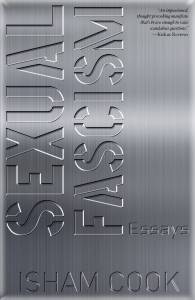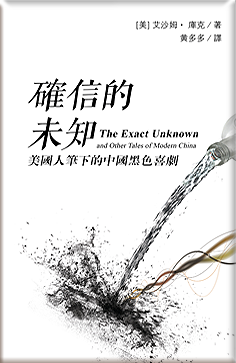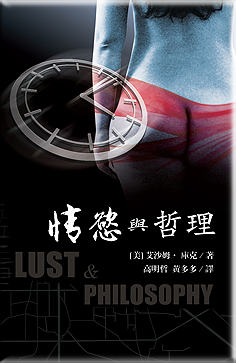
Bird’s-eye view of Fox Tower (bottom) looking west along the Tartar City Wall toward Hata Gate (top) in this bronze relief map of 1949 Beijing (Beijing Planning Exhibition Hall; photo by Isham Cook).
Paul French’s Midnight in Peking: How a Murder of a Young Englishwoman Haunted the Last Days of Old China (Penguin, 2011) has sold hundreds of thousands of copies since it came out almost a decade ago. Deftly written and combining all the desired elements one could hope for in a nonfiction thriller—a hitherto unsolved murder, a motley cast of eccentrics and wild sexual intrigue, all set in an Oriental city’s exotic past—it’s not surprising it took off into bestsellerdom. Anecdotally, it may be the most widely read historical book on China in the English world today. More recently Graeme Sheppard has thrown down the gauntlet with his A Death in Peking: Who Really Killed Pamela Werner? (Earnshaw Books, 2018). Relying on the same pool of evidence, the two authors have come up with strikingly different, mutually exclusive theories as to how and why the British woman was murdered.
Pamela’s adoptive father, E. T. C. Werner, was convinced he knew the killers: enemies that were known to him. He spelled out his views in copious, frustrated letters to the British ambassador and other officials over the years following the closing of the unsolved case. If Werner’s explication of the murder takes on macabre and outlandish proportions, it coheres on its own terms and was seductive enough for French to base Midnight in Peking on it almost exclusively. As for Sheppard’s publication, my first reaction before I had the chance to read it was one of annoyance, at the nerve of this bloke trying to spoil all the fun, perhaps only to cash in on the topic’s popularity. I have since read A Death in Peking. Sheppard, a former police detective with over thirty years’ experience in Scotland Yard, finds Werner’s theories, and thus French’s account, farfetched and implausible. Where my own sympathies stand will become clear enough later. What I will say at the outset is that the fascination of the murder is greatly increased after reading both books. You will then be in a position to come to your own conclusions, though I suggest you read French’s account first and see if your impression of it still holds after reading Sheppard’s.
In what follows, I stick solely to one episode of the story—where the victim’s body was disposed of. The brute facts are straightforward and uncontroversial: sometime during the evening of January 7, 1937, Pamela Werner was killed with a blow to the head, her heart and other organs were ripped out, and her body was thrown in a ditch. But as to the exact location where it was found, there is sharp departure between the French and Sheppard accounts.
According to French, Pamela was killed in a bar or brothel on Chuanpan Hutong (a hutong being a narrow street or lane) in a seedy area known as the “Badlands,” just east of the Legation Quarter (where foreign embassies, then called legations, were confined) in the southernmost part of the “Tartar City,” as Manchu-occupied Peking was called. The killers hired a rickshaw man named Sun to ferry her body down the hutong to where it met the road running along the north side of the Tartar City wall. They then “went a short distance along that to the small stone bridge that formed a narrow gap in the Tartar wall and provided access to the Fox Tower, and its desolate grounds on the other side. When Sun had left…the men carried Pamela across the bridge to the base of the tower.” Their choice of the tower was deliberate:
Which of them was it who suggested the Fox Tower as a suitable place to carve up the body?…[The killer] would have known the legends about fox spirits, he would have known the tower was deserted at night. He certainly knew there were no streetlights there, and that the base of the tower was pitch-black. It was not patrolled by police—in fact, it was the only watchtower in Peking not to be guarded at night—and the nearest manned police box was nearly half a mile away at Hatamen Gate. Moreover it was in Chinese police territory, outside the Legation Quarter. It was the perfect location.
After carving up her body, they returned through the wall and back into the Tartar City. “What happened to Pamela’s heart, bladder, kidneys and liver?” French speculates. “Perhaps for once the rumors had come close to the truth; perhaps the organs had been eaten by huang gou [dogs]. Or perhaps they had been thrown into the fetid canal that divided the Fox Tower from the Papermakers’ District and Armor Factory Alley” where the Werners lived.
Readers of Midnight in Peking will notice that French provides no maps to help visualize the locations in the book. Well, he does provide a map of sorts, American Frank Dorn’s famous 1936 tourist map of Peking, which appears on the inside front and back covers of the paperback and as a foldout in the hardback edition (his is actually a facsimile not of the original Dorn map but a later version overlaid with simplified Chinese characters; I’ve reproduced the same from a different source). Dorn’s map was one of the first of those playful variety of maps, now standard in tourist cities, with hand-drawn renditions of popular landmarks. As thematic rather than exact maps rendered to scale, they are largely useless for getting around in a city but are indeed useful for framing on a wall.

Detail of Frank Dorn’s 1936 tourist map of Peking (reprinted by Xueyuan Publishers, Beijing, 2004).
The Dorn map was of value to French in that it contains one of the only known references to the “Fox Tower,” the English nickname at the time for the southeast corner watchtower (東南樓). French repeats the motif of “fox spirits” inhabiting the Fox Tower throughout Midnight in Peking as an atmospheric, gothic enhancement to the story (the Chinese characters for fox spirits, 狐狸精, are even used as chapter section ornaments in the book). Ubiquitous in Chinese popular lore, fox spirits are commonly associated with succubus-like sex spirits who seduce and suck out men’s life force. John Blofeld’s account of 1930s Peking, City of Lingering Spendour, relates how some Chinese built shrines, little “fox towers,” in their home or garden to appease the fox spirits and keep the mischievous goblins at bay. And a pair of Chinese female guests who once stayed overnight in my Beijing apartment likewise teased me about the fox spirit that would be creeping through my window while I was asleep—a metaphor for their own sexual thoughts. The veracity of the superstition was likely enough, but it’s not at all evident that the tower or its immediate vicinity was deserted at night, as we shall see.

(Caption by Paul French, Midnight in Peking)
We will now examine French’s claims in turn, beginning with an unattributed photo included in the book which claims to be of the Fox Tower. If it were indeed the southeast corner tower, we would be looking at the tower’s east side, while its other side faces south. The only problem is that it is not the southeast corner tower but the southwest corner tower. We know this because of one crucial detail: the parapet wall jutting out from behind the tower on the left is the Outer City wall, where it joins the west Inner City wall just beyond the tower’s west side. What faces us is the tower’s south side. There were four identically constructed L-shaped watchtowers at the southwest, southeast, northwest and northeast corners of the Tartar City. The wall just north of the southeast corner tower (the Fox Tower) was connected to Outer City wall as well, to the right of the tower’s east side, and this is visible on many maps and photos of the time. French may have acquired the photo from Juliet Bredon’s guide to the city, Peking: A Historical and Intimate Description of Its Chief Places of Interest (Kelly & Walsh, 1922), who also labeled it the “Fox Tower,” herself having acquired the photo from an A. J. Waller. But the incontrovertible visual evidence of the photograph suggests that Bredon or Waller inadvertently used the image of the southwest corner tower in place of its identical, though symmetrically reversed, southeast counterpart. French’s photo is also rather out of date, probably late nineteenth century; the buildings below the tower would later be cleared away for railway lines.
We can regard the misidentification of the Fox Tower as an oversight, easy enough for anyone to miss. The obfuscatory caption in the photo French provides is another matter: “The Fox Tower looms over eastern Peking: only the narrow ditch separated the tower from Pamela’s home on Armor Factory Alley.” The “narrow ditch” recalls the “fetid canal that divided the Fox Tower from the Papermakers’ District and Armor Factory Alley” cited above. More to the point, “the” narrow ditch implies that what we are looking at in the photo is none other than the narrow ditch in question, and therefore that Pamela’s home lies on the near side, that is, where the cameraman in this photo was standing when he took the picture. But what we are in fact looking at is the moat outside the Tartar City wall, not inside of it. There was a body of water on the inside of the wall not far from where Pamela lived known as the Pao Tzu Canal (泡子河), a narrow canal or creek which wended its way south past the inner Fox Tower and then west along the inside of the Tartar City wall. It is in this creek that French suggested Pamela’s inner organs might have been tossed. The immediate inside area of the Fox Tower would have been inaccessible, however, blockaded as it was by a barrier and the train tracks of the City Line (Jingshi Ring Railroad) which began operation in 1916. Arches had been cut on either side of the northeast and southeast corner towers to allow the train to pass through in a graceful curve as it coursed its way around the south, east and north sides of the Inner City wall.
Let’s nail down our reference points now with a few maps, beginning with a present-day satellite image showing the area of Beijing under consideration. This area stretches from today’s Chongwenmen (old Hata Men or Hata Gate) at the lower left to Dongbianmen (Tung Pien Men) at the lower right, a distance of one and a half kilometers. (The bronze relief map pictured above shows the same neighborhood as it used to appear, rotated ninety degrees to the right.) Hata Men no longer survives; it’s now a big intersection with a subway station. The Tartar City wall with its jutting battlements does survive (after being rebuilt) and is visible running below the Beijing Railway Station, the construction of which wiped out much of the old neighborhood. The Fox Tower at Dongbianmen which features so prominently in French’s Midnight in Peking, survives intact and is also discernible (as it is in the bronze relief map above) as the L-shaped structure at the extreme eastern end of the wall. The Werner home address was 1 Armor Factory Alley or Kui Chia Chang in Chinese. As the numbering system changed after 1949, we cannot exactly place the building they lived in, but the street survives as indicated on the satellite map, lying roughly 200 meters north of the Tartar City wall. The Tartar City is the old term employed by foreigners for the Inner City, which until the collapse of the Qing Dynasty in 1912 was controlled by the Manchus. To the south of the wall was the Chinese City, where the segregated Han Chinese lived and which was known to residents as the Outer City. Both the Inner and Outer cities were surrounded by walls on all sides (hereafter “Inner City” and “Tartar City” are referred to interchangeably).

2020 satellite map of Beijing, showing southeast section of former Tartar City (scale at lower left = 100 meters).
I now present several early twentieth-century maps of Peking, matched to scale with the satellite map above and showing the same section of the city. A 1914 map of the area, before the City Line tracks were laid, shows the length of the Pao Tzu Canal from its starting point well over half a kilometer north along the east Inner City wall to its exit through the south Inner City wall about half a kilometer east of Hata Gate (as a rough measure, the distance between any two battlements along the Tartar City wall is about 100 meters). We see three bridges over the canal, one on the right and two more near its exit on the left. We also see Chuanpan Hutong inside the wall to the west.

1914 map of Beijing, southeast corner of the Tartar City (SinoMaps Press, 2014).
In a 1928 map, the battlements of the south Inner City wall are drawn closer together, more added (seventeen) than actually existed (thirteen). But the southern portion of the canal is rendered more accurately, hugging closer to the wall than in the 1914 map. Of the four bridges now shown, two appear to correspond to two of the bridges in the 1914 map. You can also now see the City Line track cutting a diagonal through the walls between the Pao Tzu Canal and the inner Fox Tower.

1928 map of Beijing, southeast corner of the Tartar City (SinoMaps Press, 2014).
French states that the killers brought Pamela’s body down Chuanpan Hutong to the point where it joins the inner wall road, through the wall and out the other side to the Fox Tower, the very escape route referred to above: the “narrow gap in the Tartar Wall” formed by “the small stone bridge.” There were possibly two such bridges in this location, one just across the canal before it exited the wall, and another close by (see 1914 map). The bridges were separate from the wall and functioned only to allow people to step across the canal. The entire extent of the city walls had always been closed to human traffic except through dedicated gates, the closest one here being the Hata Gate half a kilometer to the west. Unless French can present historical evidence of a “gap” in the wall, I have to assume he made it up. As for the canal’s passage through the wall, this must have been underground, through a gully or trench. The Pao Tzu Canal was not part of the Imperial moat system, at least not since the start of the Qing Dynasty (as one 1644 map reveals); it was decorative and connected to the outer moat, which lay several meters below street level, that is, below the base of the city walls. The Pao Tzu Canal would thus also have lain several meters below street level—hence the need for bridges. Anyone who managed to descend into the canal and squeeze through a water gate would have needed to pass under the wall’s twenty meters of thickness and then at least another 100 meters (and under several train tracks) to reach the moat. From there one would have found the Fox Tower a bit further on than “the other side” of the wall, as French puts it. It was a kilometer to the east. If the body really needed to be dumped at the base of the Fox Tower and nowhere else, it would have been far easier simply to ascend the wall from the inside (there were steps) and throw the body over the wall. This too would have been rather foolish, however, as the Dongbianmen train station and Dongbianmen Gate faced the Fox Tower to the immediate south and east. The killers would have confronted electric streetlights, night watchmen, and possibly police. In short, any notion the Fox Tower was the ideal place to ditch the body is preposterous.

1936 map of Beijing, southeast corner of the Tartar City (SinoMaps Press, 2014).
The only convenient spot for disposing of the body quickly and discreetly would have been the roughly 200-meter stretch inside the wall just beyond the “small stone bridge.” Further east than that, and the canal curved around a cemetery and back into the residential area where the Werners lived. The above map, published in October 1936 (only a few months before Pamela was murdered), indicates where the body was dumped, as proposed by French (circle), Sheppard (cross), and a revised location I’ll explain below (arrow). You’ll note this map has no bridges where the canal exits the wall. The relative proportions and perspectives in all the maps, as should be apparent, show considerable variation. Chinese cartography at the time was not yet an exact science; if maps got things mostly right, they were considered acceptable. While we can look for strong consistencies across a series of maps, we cannot fully trust any one map. From the initial police reports of the murder (later destroyed by the Japanese), the newspapers were informed that Pamela’s body was found “inside the city wall and 250 yards from the girl’s home” (London Times, cited in Sheppard). Reporter George Gorman, who knew the Werners personally but was not eyewitness to her body’s discovery the morning of January 8, reported the following in the February 1937 issue of Caravan, the magazine he edited:
The hutung where the body was found runs immediately north of the Tartar Wall which separates the Chinese City from the Tartar City. It is like a long, bleak tunnel, with the wall rising sixty feet high on one side, and the lower walls of a Chinese school on the other. That lane is one of the loneliest in the city; there are no residences or shops except at the west end where it joins on to Hatamen Street, and the lower end where it sweeps around the German cemetery. The place is ghost-haunted according to Chinese legend. It is a paved hutung, with no sidewalks, of course, as is the way with all but the main thoroughfares. The way is bumpy for cars, rickshaws and cycles. On its south side the roadway dips into a depression used for dumping refuse, and it was in this hollow, beyond hailing distance from the nearest residence or patrol, little Pamela’s body was found. (cited in Sheppard)
Some newspapers printed the photograph (below) of the inner road along the south Tartar City wall, facing west toward the faint outline of what appears to be Hata Gate, showing the ditch where Pamela’s body was alleged to have been found. One problem with the photo is that it was taken after the fact. We do not see the body, and we don’t know the circumstances surrounding the photo. There are moreover no signs of the Pao Tzu Canal or any bridges (the photo’s graininess also presents difficulties).

Location where Pamela Werner’s body was found as reported in the Peiping Chronicle, Jan. 9, 1937, one day after the murder (Sheppard, A Death in Peking).
If Armor Factory Alley was indeed as close to the wall as it appears on the 1936 map, then “250 yards” (230 meters) from a spot just west of the German Cemetery would reach it, provided the Werners lived at the western end of the street; had they lived any further to the east, then Pamela’s body would have to have been further east along the wall as well (staying within the stated 250 yards), in the German Cemetery itself or to the east of it, a location contradicted by Gorman’s account of the “loneliest” section of the road being opposite the “Chinese school” (the Peking Academy). But there is a problem with the 1936 map: the Armor Factory Alley’s position is placed some 100 meters too far to the south (compare the satellite map above). Contemporary accounts all point to the body’s location considerably further west along the wall than 250 yards from the Werner home. In other words, the reported figure may simply be wrong—someone’s underestimation which secondhand reports took as fact.
We do have one firsthand account by someone who actually saw the body and spoke of the location on numerous occasions: Pamela’s own father. He happened upon her body while out looking for her in a panic, as it was being examined in the ditch by the police the morning following her death. As Reuters reported several days later: “‘Interviewed by a reporter of this paper yesterday Mr E. T. C. Werner admitted that the body of the young foreign girl found in the ditch along the city wall between the Hata Men and the German cemetery was that of his daughter, Pamela. The face was mutilated beyond identification but the clothing on the body was exactly the same as his daughter wore in her lifetime’” (cited in Sheppard). As the only eyewitness to the body’s location that we are in possession of, Werner’s account deserves to be privileged above the others. He had of course axes to grind, and his theories as to the murderers’ identity were one-sided. But he would have had no reason to fudge the location of his daughter’s body, which in no way contradicted his theories, let alone challenge the police report. On the contrary, he was possessed by these details and repeated them with unfailing consistency over and over in his insistent letters to the British Ambassador and others, namely: the killers ferried the body by rickshaw down to where Chuanpan Hutong meets the inner wall road, turned left and stopped along the rear of the Peking Academy. They dismissed the rickshaw man and disposed of the body in a ditch on the far side of a “stone bridge” (the “small stone bridge” mentioned by French). The following map which Werner sketched in his June 30, 1939 letter to the British Ambassador lays it all out clearly.

E. T. C. Werner’s sketch of the location (far right) where Pamela’s body was found (with permission from the UK National Archives (Document F0371/23513)).
Werner depicts the stone bridge with two vertical convex lines, that is, as oriented north-south, corresponding to the bridge that appears in both the 1914 and 1928 maps (not the one closest to the wall). If this is indeed the same north-south bridge, the body would have lain approximately where I have marked the arrow on the 1936 map, some 150 meters to the west of Sheppard’s location. You’ll notice the 1936 map fails to include the bridge, but it certainly existed. We can be reasonably confident the body was found somewhere along this 200-meter stretch between the stone bridge and the German Cemetery, and probably closer to Chuanpan Hutong and the bridge, as the killers would have been in a hurry to dispose of it and there was little purpose in going any further down the road. This revised location is perfectly compatible, by the way, with both Werner’s and Sheppard’s theories of the murder.
Barring new documents coming to light, the true location will never be known. It is no longer possible to examine that stretch of the wall today for clues, as it’s blocked off to the public. Even if access was allowed, it’s unclear how much of the restored wall is in its original state or wholly rebuilt. The outside of the wall has been turned into a park and the moat long gone and filled in by Chongwenmen East Street. In the park about halfway between Chongwenmen (Hata Men) and the Fox Tower lies a surviving signal station and a preserved short length of one of the train tracks. That’s it.
What is incontrovertible is that the body was found on the inside, not the outside, of the wall. This presents a problem for Midnight in Peking. It’s not as if we’re dealing simply with alternative equivalences, where we can weigh up the evidence for and against French’s and Sheppard’s accounts of the body’s location in the scales. We’re dealing, rather, with different purposes. On the one hand, the well-established fact, agreed upon by all reports of the time and unchallenged since, that Pamela’s body was found on the inside of the Tartar City wall. On the other, a pure fabrication, concocted for aesthetic and literary purposes, the claim that the body was found at the base of the Fox Tower a kilometer to the east. French was familiar enough with the documents ruling out this possibility, including E. T. C. Werner’s letters and the hand-drawn map shown above, which after all formed the basis for his book, a book purporting to be an exhaustively researched true crime story.
You might think I’m being unfair for picking on something that readers might regard as trivial and immaterial to the really important stuff, the meat of the story: who committed the murder and why. If it in no way detracts from the enjoyment of the story, who cares where the body was found? By embellishing the tale with a haunted watchtower looming over the neighborhood, the book was made more memorable, increasing its sales and popularity, and ultimately instigating Graeme Sheppard’s corrective account, which if nothing else injects new publicity into Midnight in Peking. I should emphasize that I have no interest in challenging French’s use of Werner’s theories per se, which are plausible on their own terms and cannot entirely be discounted. As noted earlier, you are encouraged to supplement your reading of Midnight in Peking with A Death in Peking to get both sides of the story.
As I pondered over the Fox Tower problem, I suddenly became confused. Could it be I have been completely out of the loop and missed something all along, a literary genre I am not aware of and everyone else is, if only I knew what it was? Something akin to historical fiction but for murder mysteries, based on actual events which are then fiddled with and changed to suit audience expectations? I grabbed the back cover of Midnight in Peking looking for a category label but there is none, though it abounds with blurbs and endorsements describing it as “true crime.” Nor is there any disclaimer on the verso page, one suitable for historical fiction such as, “This is a work of fiction. Where real-life historical figures appear, the locales concerning those persons are entirely fictional and are not intended to depict actual locales or to alter the fictional nature of the work.”
Not being savvy to the latest publishing trends, I have long believed, perhaps mistakenly, that there is a strict separation between fiction and nonfiction, and I was operating under the assumption that Midnight in Peking falls neatly into the latter category. Yet to play with details for literary effect, to depart even from a single known fact, is a pretty big deal. It disqualifies the project as nonfiction. It can no longer be called true crime. At least that’s what I’ve believed up till now. Perhaps Penguin Books can clarify. For French’s sake, I hope I’m wrong.
* * *
Of related interest by Isham Cook:
Chungking: China’s heart of darkness
Out of the squalor and into the light: When the Shanghai Wall came down
The literature of paralysis: The China PC scene and the expat mag crowd
The ventriloquist’s dilemma: Asexual Anglo travelogues of China
Like this post? Buy the book (see contents). Now available on Amazon:
 CONFUCIUS and OPIUM:
CONFUCIUS and OPIUM:
CHINA BOOK REVIEWS
Categories: China














French also changed the date of the dentist appointment too….to suit his story.
Midnight in Peking should have been classified as “historical fiction”, but Penguin had enough pull to pass it off as “true crime”, thus making it eligible for more accolades and awards than it honestly should have won.
I have lived in Beijing for 12 years and have followed this narrative with great interest as well as visiting all the locations in the books. The location of where the body of Pamela was actually found is an absolute fact! Paul French is a great fictional writer; however, his focus on detail and truism is well off the mark with no caring thought at all to living relatives of those wrongly held to account for this crime. The utter sensationalism of unfounded facts in his book [Midnight in Peking] has one direction: to sell his book. However, Graeme Shepard’s, superbly written and documented version of events ‘A Death in Peking’ has to be credited on facts alone, to be a much closer written description to the truth of what happened in January 1937 and deserves much credit for vindicating and putting things straight for the relatives of the deceased, who were so wrongly accused of this terrible murder. I have recently found the location of the British Cemetery where Pamela and her mother, as well as Prentice (the dentist), were buried: Beijing latitude 39.9041 – longitude 116.3494 Any views on this subject are welcome.
If one wanted to check the book’s veracity, questions that might be considered include: 1) was there actually a district in Peking called the Badlands? 2) Was the glacis actually covered over? (Here the Dorn map reproduced in the book is suggestive.) 3) Was there a location on Chuanpan hutong where a building could have a front on the street and a back to the Legation Quarter? (p.116) 4) If Edward Werner, burying his daughter in the English Cemetery, had looked up, could he actually have seen the Fox Tower? (p.134) 5) Did Peking in this period have a Central Station? (p.167) (Again, see the Dorn map.) 6) Why don’t the book’s source citations include page numbers?